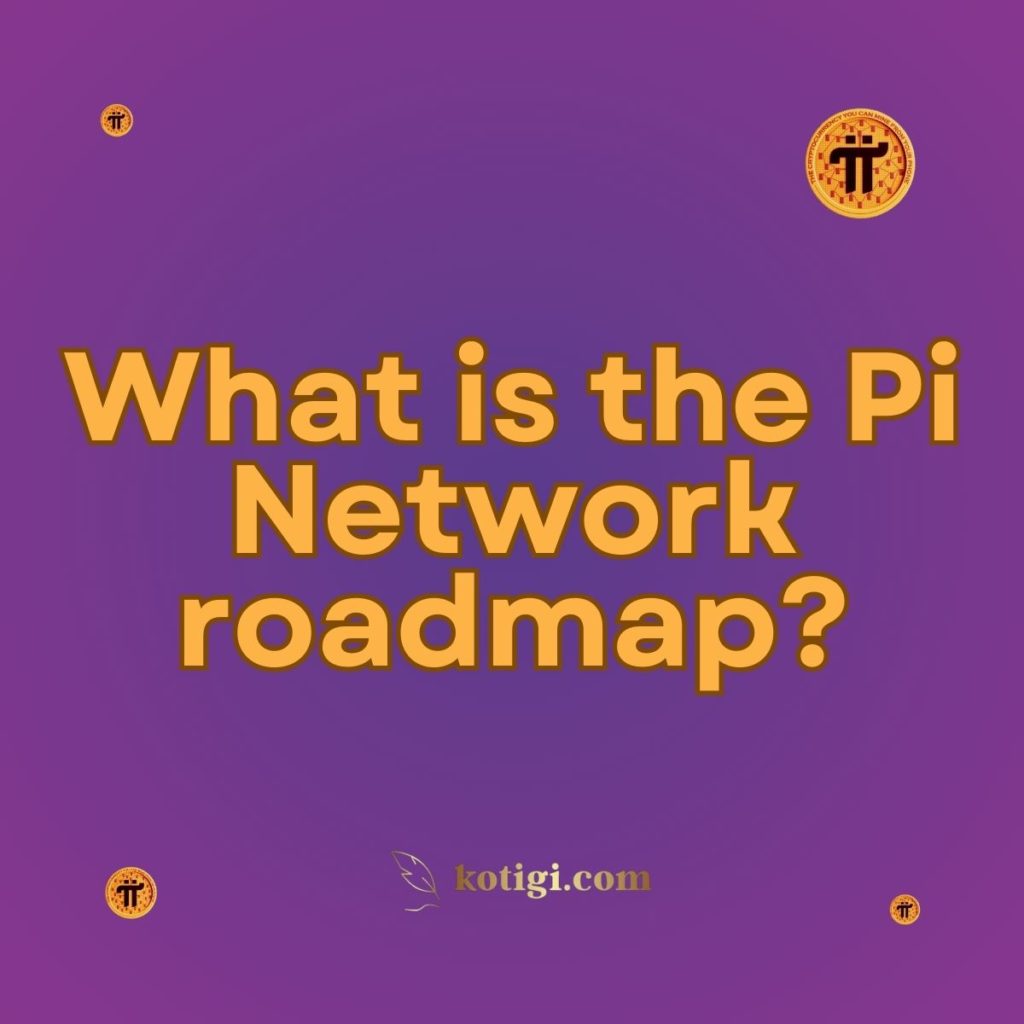
What is the Pi Network roadmap?
The Pi Network roadmap outlines the key milestones and future plans that the project aims to achieve as it evolves from its early stages to a fully operational cryptocurrency and blockchain platform. The roadmap is divided into several phases, each with specific goals and developments. Here’s an overview of the Pi Network roadmap:
1. Phase 1: Design and Distribution
1.1. Launch of the Pi Network App (March 2019):
Pi Network was officially launched in March 2019 with the release of the mobile app. The primary goal of this phase was to distribute Pi coins to early adopters and build a user base. Users could mine Pi coins on their smartphones by simply logging into the app daily, earning rewards for participating in the network.
1.2. Building the Community:
During this phase, Pi Network focused on growing its community by encouraging users to invite others to join. The project emphasized accessibility, aiming to bring cryptocurrency to people who might not be familiar with traditional mining methods. By the end of Phase 1, Pi Network had millions of users worldwide.
1.3. Development of Core Team and Infrastructure:
The core team, led by Stanford graduates, focused on developing the network’s infrastructure, security measures, and scalability. This phase also involved gathering feedback from the community to refine the user experience and address any technical challenges.
2. Phase 2: Testnet
2.1. Launch of the Testnet (December 2020):
Pi Network entered its second phase with the launch of the Testnet in December 2020. The Testnet allowed the core team and the community to test the network’s capabilities, including transaction speeds, security protocols, and node operations, in a controlled environment.
2.2. Node Deployment:
During the Testnet phase, users were encouraged to set up Pi nodes, which are essential for decentralizing the network. These nodes help validate transactions and secure the network. The Testnet provided valuable data on node performance and network stability, which was critical for preparing for the mainnet launch.
2.3. Ecosystem Development:
This phase also saw the beginning of ecosystem development, with the team exploring the potential for decentralized applications (dApps) and other use cases for Pi. Developers were invited to build and test dApps on the Testnet, setting the stage for a broader ecosystem once the mainnet goes live.
3. Phase 3: Mainnet Launch
3.1. Launch of the Mainnet (Expected 2024):
The mainnet launch represents the transition from the Testnet to a fully operational blockchain. During this phase, Pi Network will become a true decentralized cryptocurrency, with all transactions recorded on a public ledger. The launch is expected in 2024, although the exact date depends on the successful completion of Testnet testing and security audits.
3.2. Migration of User Balances:
Once the mainnet is live, users’ Pi balances from the Testnet will be transferred to the mainnet. However, this migration will be subject to the completion of KYC (Know Your Customer) verification to ensure compliance with regulations and prevent fraud.
3.3. Exchange Listings and Liquidity:
Following the mainnet launch, Pi Network aims to list Pi on major cryptocurrency exchanges. This will allow users to trade Pi for other cryptocurrencies or fiat currencies, providing liquidity and establishing a market value for Pi. Exchange listings are a critical milestone in bringing Pi into the broader crypto market.
4. Post-Mainnet Development
4.1. Expansion of the Ecosystem:
After the mainnet launch, Pi Network plans to expand its ecosystem by supporting a wide range of dApps, marketplaces, and financial services. The goal is to increase the utility of Pi by creating real-world use cases that drive demand and adoption. Partnerships with developers, businesses, and service providers will be essential for this expansion.
4.2. Governance and Decentralization:
Pi Network envisions a governance model where the community plays a significant role in decision-making. This could involve creating a decentralized autonomous organization (DAO) that allows Pi holders to vote on network upgrades, dApp development, and other important issues. Increasing decentralization by empowering users to run nodes and participate in governance will be key to the network’s long-term success.
4.3. Continuous Innovation and Security:
Post-mainnet, Pi Network will focus on continuous innovation to stay competitive in the rapidly evolving cryptocurrency space. This includes exploring new use cases, improving scalability, and enhancing security measures to protect the network from potential threats. Regular security audits and updates will ensure the network remains secure as it grows.
5. Long-Term Vision
5.1. Global Adoption:
The long-term vision for Pi Network is to achieve widespread global adoption, particularly in regions where access to traditional financial services is limited. By providing an easy-to-use digital currency, Pi Network aims to bring financial inclusion to millions of people around the world.
5.2. Integration with Traditional and Digital Economies:
Pi Network hopes to bridge the gap between traditional finance and the digital economy by integrating Pi with various sectors, including e-commerce, remittances, and digital identity. Strategic partnerships and collaborations will be crucial in realizing this vision.
Conclusion
The Pi Network roadmap outlines a comprehensive plan to evolve from a mobile mining experiment to a fully decentralized cryptocurrency ecosystem. With a focus on user growth, ecosystem development, and decentralization, Pi Network aims to create a sustainable and valuable cryptocurrency that can be used for a wide range of applications. As the project moves forward, the successful execution of this roadmap will be critical to Pi Network’s long-term success and adoption.





